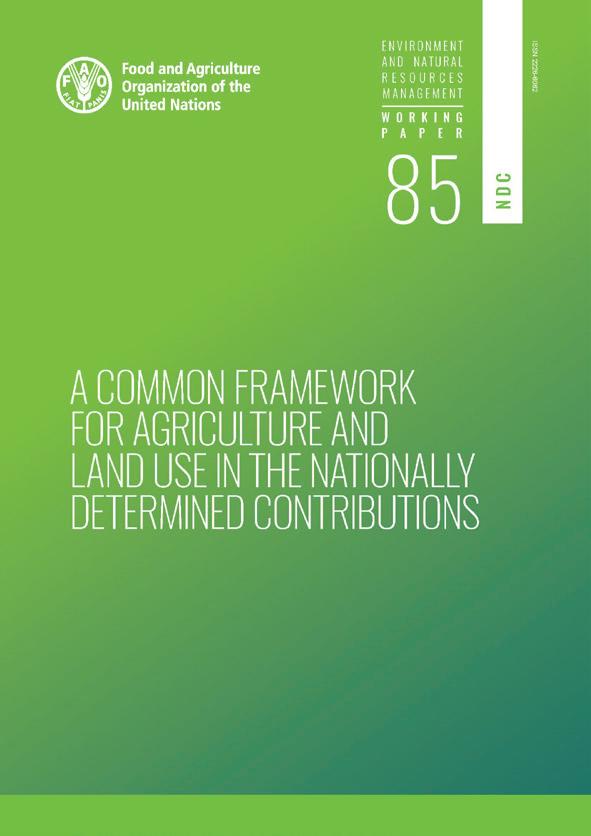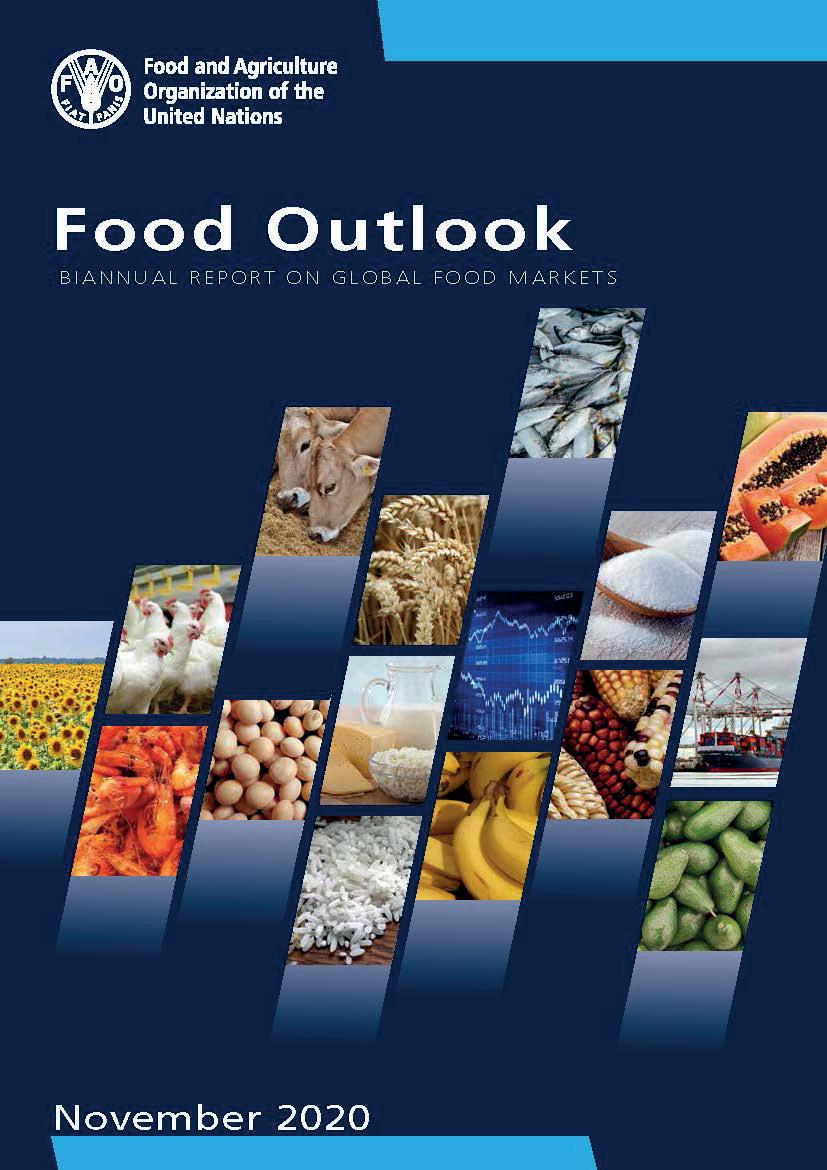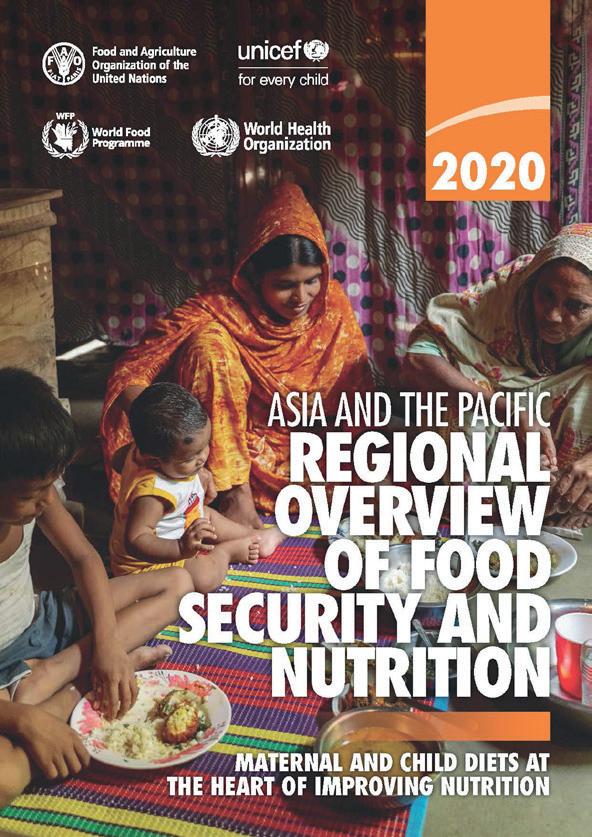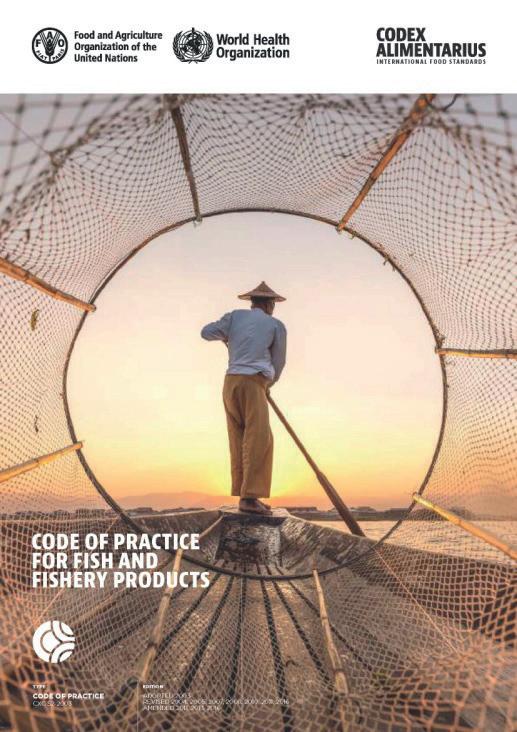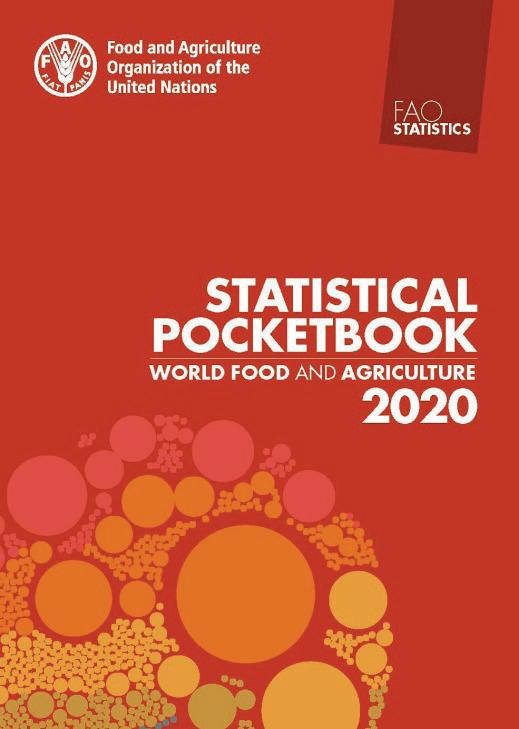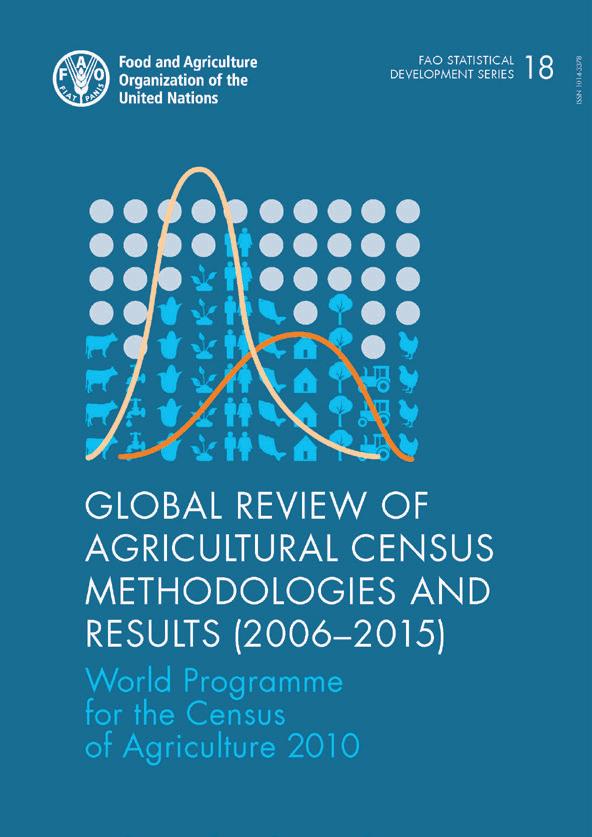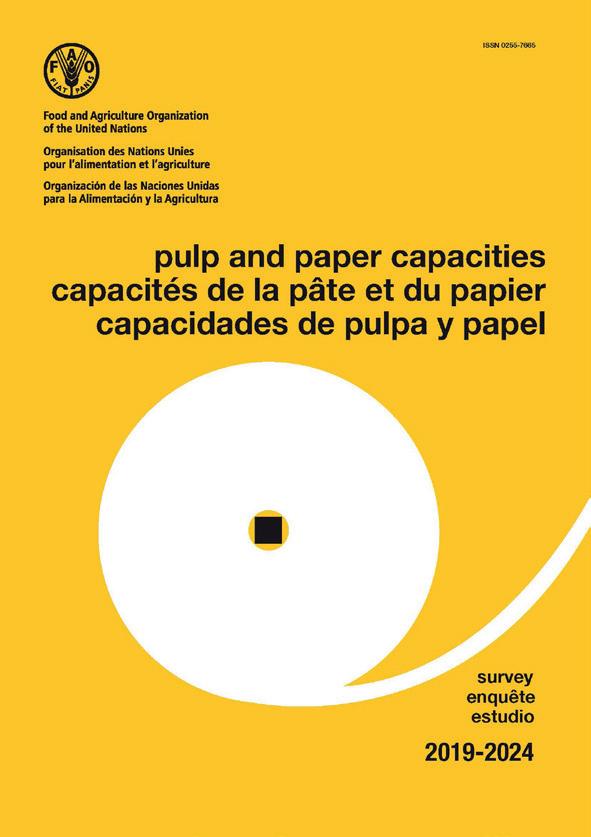
7 minute read
Fisheries and aquaculture
from News 1/2021
by CIHEAM-Bari
LibraryNewsletter OrganicAgriculture Newsletter Economic Books Fisheries Agriculture Food and nutrition Aquaculture Natural resourcesMAIBDocumentation Center Documentation Center Mediterranean Agronomic Institue of Bari News DOCUMENTATION CENTRE - CIHEAM BARI from the Library
makers identify and recognize areas in which difficult tradeoffs may be needed between competing policy objectives, and identify possible ways in which these can be addressed. Furthermore, while the different targets set out under SDG 2 are mutually interdependent and inter-related, it is important to address the trade policy dimension of each component individually as part of a broader plan of action.
Advertisement
Download publication
Cite this content as: Gadhok, I., Mermigkas, G., Hepburn, J., Bellman, C., Krivonos, E. 2020. Trade and Sustainable Development Goal 2 – Policy options and their trade-offs. Rome, FAO.
FISHERIES AND AQUACULTURE
FAO Yearbook. Fishery and Aquaculture Statistics 2018/FAO annuaire. Statistiques des pêches et de l’aquaculture 2018/FAO anuario. Estadísticas de pesca y acuicultura 2018
Type of publication: Book Author: FAO Publisher: FAO Year of publications: 2020 Place of publication: Rome, Italy Pages: #110 p. ISBN: 978-92-5-133371-6 Serial Title: FAO Yearbook of Fishery and Aquaculture Statistics ; Yearbook 2018 (published 2020) doi: https://doi.org/10.4060/cb1213t
Agrovoc: fishery statistics; aquaculture statistics; trade statistics; production data; capture fisheries; employment; ships; statistical data
Abstract: The FAO Yearbook of fishery and aquaculture statistics is a compilation of statistical data on capture fisheries and aquaculture production, employment, commodities production and trade, apparent fish consumption and fishing fleets. It is structured into a booklet (containing summary tables, notes on major trends, concepts, classifications and a map of FAO major fishing areas) and a USB card presenting the full yearbook package with all the key information and the complete set of statistical tables. L’Annuaire des statistiques des pêches et de l’aquaculture de la FAO est une compilation de données statistiques sur les captures, la production de l’aquaculture, l’emploi, la production et le commerce des produits halieutiques, les bilans alimentaires et les flottes. L’Annuaire est composé d’un fascicule (contenant des tableaux résumés, des notes sur les tendances principales, une description des concepts et des classements, ainsi qu’une carte des principales zones de pêche de la FAO) et d’une clé USB incluant la totalité des renseignements et la collection complète des tableaux statistiques de l’Annuaire. El Anuario de estadísticas de pesca y acuicultura de la FAO es una compilación de datos estadísticos sobre las capturas, la producción de acuicultura, el empleo, la producción y el comercio de los productos pesqueros, las hojas de balance de alimentos y las flotas. El Anuario se compone de un cuadernillo (con cuadros resúmenes, notas sobre las tendencias principales, conceptos básicos y clasificaciones, así como un mapa de las principales zonas de pesca de la FAO) y de una tarjeta USB que incluye toda la información y el conjunto completo de los cuadros estadísticos del Anuario.
Download publication
Cite this content as: FAO. 2020. FAO yearbook. Fishery and Aquaculture Statistics 2018/FAO annuaire. Statistiques des pêches et de l’aquaculture 2018/ FAO anuario. Estadísticas de pesca y acuicultura 2018. Rome/Roma.
LibraryNewsletter OrganicAgriculture Newsletter Economic Books Fisheries Agriculture Food and nutrition Aquaculture Natural resourcesMAIBDocumentation Center Documentation Center Mediterranean Agronomic Institue of Bari N° 1 - 2021 - January-Februarywww.iamb.it

Global trends in status and management of assessed stocks: achieving sustainable fisheries through effective management
Type of publication: Book Author: Melnychuk, M. C., Baker, N., Hively, D., Mistry, K., Pons, M., Ashbrook, C. E., Minto, C., Hilborn, R., Ye, Y. Publisher: FAO Year of publications: 2020 Place of publication: Rome, Italy Pages: 152 p. ISBN: 978-92-5-133541-3 Serial Title: FAO Fisheries and Aquaculture Technical Papers ; 665 doi: https://doi.org/10.4060/cb1800en
Agrovoc: sustainable fisheries; fishery management; fish stocks; stock assessment; stocking density; trends
Abstract: This report provides an overview of the biological status of assessed stocks around the world and relates measures of stock status to the strength of fisheries management. Stock assessment outputs, consisting primarily of time series of abundance and fishing pressure relative to target reference points, were compiled for 548 marine fish and invertebrate stocks in the RAM Legacy Stock Assessment Database. Data summary methods included: global and regional mean trends of abundance and fishing pressure relative to target reference points; bivariate plots of relative abundance and fishing pressure; estimates of potential equilibrium yield foregone at current fishing pressure; and proportions of stocks in different biomass status categories. These measures of stock status were summarized at the global level as well as separated by 16 FAO Major Fishing Areas and ocean basin regions for comparison.
Download publication
Cite this content as: Melnychuk M. C., Baker N., Hively D., Mistry K., Pons M., Ashbrook C. E., Minto C., Hilborn R. & Ye Yi. 2020. Global trends in status and management of assessed stocks: achieving sustainable fisheries through effective management. FAO Fisheries and Aquaculture Technical Paper No. 665. FAO, Rome.
back to index
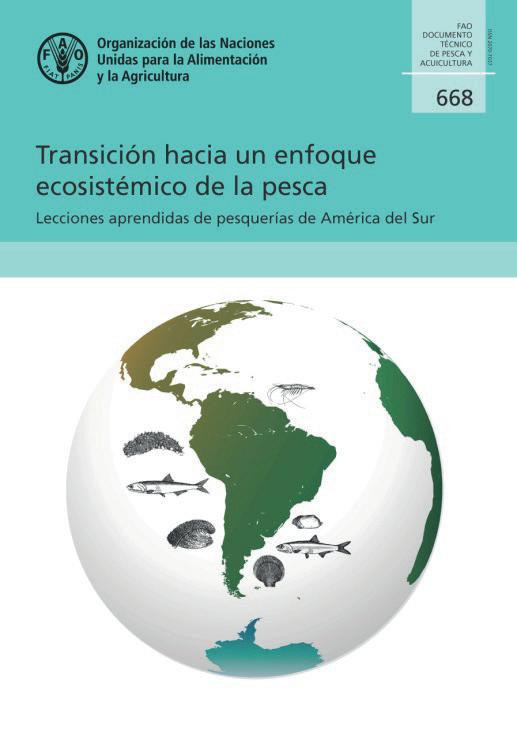
Transición hacia un enfoque ecosistémico de la pesca. Lecciones aprendidas de pesquerías de América del Sur
Type of publication: Book Author: Defeo, O. y Vasconcellos, M. Publisher: FAO Year of publications: 2020 Place of publication: Rome, Italy Pages: 167 p. ISBN: 978-92-5-133664-9 By Country/Territory: South America Serial Title: FAO Fisheries and Aquaculture Technical Papers ; 668 doi: https://doi.org/10.4060/cb2229es
Agrovoc: ecosystem approaches;fisheries;fishery management;case studies;good practices; South America
Abstract: La FAO ha promovido el enfoque ecosistémico de la pesca (EEP) como una aproximación holística dirigida a mejorar la situación crítica de la pesca a nivel mundial. A pesar de la amplia aceptación del EEP, se desconoce el grado en que la adopción de dicho marco condujo, en la práctica, a cambios reales en los sistemas de gestión. Esta publicación analiza siete pesquerías de América del Sur que intentaron desarrollar sistemas de manejo de acuerdo con principios básicos de un EEP: la vieira Zygochlamys patagonica y la anchoíta
LibraryNewsletter OrganicAgriculture Newsletter Economic Books Fisheries Agriculture Food and nutrition Aquaculture Natural resourcesMAIBDocumentation Center Documentation Center Mediterranean Agronomic Institue of Bari News DOCUMENTATION CENTRE - CIHEAM BARI from the Library
Engraulis anchoita en Argentina; el camarón siete barbas Xiphopenaeus kroyeri en Suriname; la almeja amarilla Mesodesma mactroides en Uruguay; el loco Concholepas concholepas en Chile; el pepino de mar Isostichopus fuscus en Ecuador; y la anchoveta Engraulis ringens en Perú. El análisis comparativo de estas pesquerías permitió identificar condiciones contextuales preexistentes propicias para el logro de pesquerías exitosas, incluyendo: (1) la presencia de límites del sistema pesquero bien definidos, con una clara correspondencia entre las escalas ecológica (recurso), de operación (pesca) y gestión (unidad de manejo); (2) fuerte cohesión interna, liderazgo y tradiciones en las comunidades pesqueras; (3) un marco legal adecuado para la implementación del EEP; y (4) condiciones institucionales propicias, tales como reglas de acceso bien definidas y gobernanza colaborativa entre los usuarios y los gobiernos centrales en el largo plazo. Los factores que desencadenaron cambios en el enfoque de gobernanza y que llevaron a sistemas de manejo más holísticos estuvieron relacionados, en la mayoría de los casos, a crisis pesqueras, aunque en otros casos el incentivo o factor disparador fuede naturaleza económica (e.g., certificación pesquera). Fue posible identificar logros relevantes como resultado de dichos cambios, que se vieron reflejados en los cuatro pilares de la sostenibilidad, i.e., ecológicos, sociales, económicos e institucionales. Se observaron efectos importantes de forzantes externos afectando a los sistemas pesqueros a diferentes escalas de espacio y tiempo, tales como el clima, los mercados, la acuicultura y la inestabilidad y fragilidad en los sistemas de gobernanza. Se describen estrategias de adaptación y mitigación para contender con estos impactos en diferentes etapas del ciclo de manejo, así como para aumentar la resiliencia de los sistemas pesqueros en el largo plazo.
Download publication
Cite this content as: Defeo, O. y Vasconcellos, M. 2020. Transición hacia un enfoque ecosistémico de la pesca - Lecciones aprendidas de pesquerías de América del Sur. FAO Documento técnico de pesca y acuicultura N.o 668.Roma, FAO.
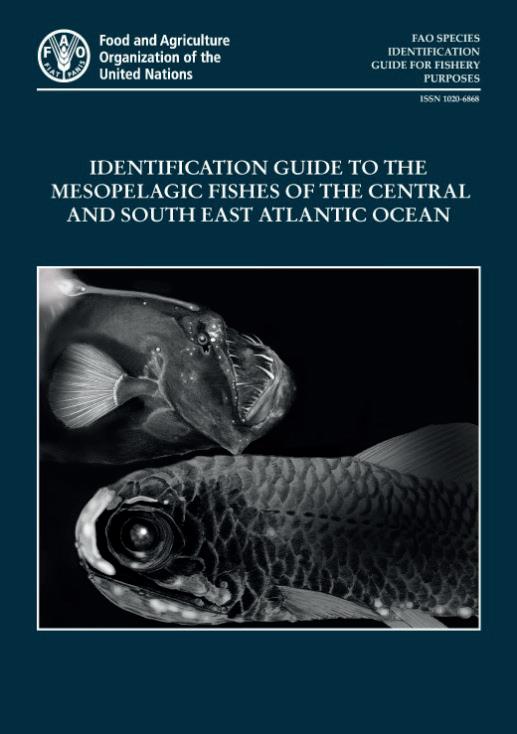
Identification guide to the mesopelagic fishes of the central and south east Atlantic Ocean
Type of publication: Book Author: Sutton, T.T. ; Hulley, P.A. ; Wienerroither, R. ; Zaera-Perez, D. ; Paxton, J.R. Publisher: FAO Year of publications: 2020 Place of publication: Rome, Italy Pages: 346 p. ISBN: 978-92-5-133094-4 Serial Title: FAO Species Identification Guide for Fishery Purposes ; 1 doi: https://doi.org/10.4060/cb0365en
Agrovoc: pelagic fisheries; fishes; species; identification; nomenclature; animal morphology; geographical distribution; Atlantic Ocean; Central Atlantic; Southeast Atlantic
Abstract: This identification guide includes 552 species of mesopelagic fishes (i.e. those fishes residing primarily between 200-1000 m depth during daytime) that are known to occur in the central and south east Atlantic Ocean. Fully illustrated dichotomous keys to all taxa are provided. Species are treated in detail, with accounts including the scientific name, FAO common name in English (where available), other useful characters, size, a distribution map, and one or more illustrations. To facilitate even further the identification of the taxa, captions and arrows are added to help users quickly locate their key morphological features. The guide is intended for both specialists, and nonspecialists who have a working knowledge of ichthyology.
Download publication
Cite this content as: Sutton, T.T., Hulley, P.A., Wienerroither, R., Zaera-Perez, D. and J.R. Paxton. 2020. Identification guide to the mesopelagic fishes of the central and south east Atlantic Ocean. FAO Species Identification Guide for Fishery Purposes. Rome, FAO.

